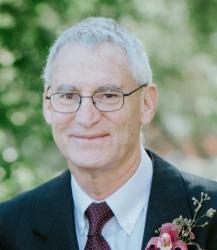This article is based on my 1990 interview with Scott Garrelts.

Photo courtesy MLB.com
BACKGROUND NOTE: Scott Garrelts pitched for the San Francisco Giants from 1982-1991, compiling a 69-52 won-loss record with a 3.29 ERA. Garrelts didn’t attain instant success in baseball, growing up as he did in an Illinois town of 600 people. “I was nothing spectacular,” he says. “My first two years in high school were not that big of a deal. In my sophomore year, I pitched terribly. I got beat up all over the place.” But in his junior year, he began to improve. In a game for Buckley-Loda High, he struck out 22 batters in the seven-inning contest. If you know a little about baseball and math, you realize those numbers don’t compute – unless the catcher dropped a third strike, allowing the batter to advance to first base. “He dropped two,” Garrelts explains. “There was one guy who put the ball into play. He bunted it back to me in the air.” After that eye-opening no-hitter, the scouts started showing up. When Garrelts graduated from high school in 1979, the Giants made him their first selection in the free-agent draft. After six seasons of minor league ball, he burst onto the Giants’ scene in 1985 with an outstanding season. As a reliever, he posted a 9-6 mark with a 2.30 ERA and 106 strikeouts in 105 innings. He was the only Giant selected to the National League All-Star Team.
*********************
Scott Garrelts grew up as a Cubs fan, never dreaming he would be on the mound at Wrigley Field in the first game of the 1989 National League Championship Series. The 28-year-old San Francisco Giants pitcher beat the Cubs in that game, helping to propel his team into the World Series.
Though the Giants fell to the Oakland Athletics four games to none in the earthquake-interrupted Series, 1989 was the best year of Garrelts’ career. The 6-4 righthander compiled a 14-5 won-lost record and led all National League starting pitchers with a 2.28 ERA.
Things haven’t always gone so smoothly for Garrelts. Between an All-Star season as a reliever in 1985 and 1989’s heroics, life in the big leagues has been a roller coaster ride. Indeed, 1988 was a season he’d like to forget.
Scott Garrelts: I had a 6.21 ERA in the first half. I was blowing saves and struggling. The situation went from bad to worse when the media and fans started criticizing his performance. I kept trying to prove to the Giants, to prove to everybody, what I could do, and I kept spinning my wheels, getting deeper and deeper.
As the frustration grew, Garrelts talked with two of his closest friends on the Giants, pitchers Dave Dravecky and Atlee Hammaker. Like Garrelts, Dravecky and Hammaker are born-again Christians. They had also struggled with trying to please everybody when they pitched. “We talked about what I am playing for,” says Garrelts. “I stopped trying to pitch for everybody, and when I did that, I could accept myself and just do my best.”
In his last 20 games of 1988, Garrelts allowed just four earned runs in over 32 innings (a 1.20 ERA), recording four saves and two wins, salvaging a season that had almost become a nightmare.
Garrelts was promoted to a starting role in 1986. But he didn’t win consistently and was moved back to the bullpen by July. He did better as a reliever; the following year, he led all National League relievers with 127 strikeouts. Then came the nearly disastrous 1988 season.
“Without Jesus in my life,” says Garrelts of that year, “I don’t know if I could have made it. The people around me knew I was struggling, yet I still had that comfort. I was still at ease.”
Although Garrelts attended church with his family throughout his youth, it wasn’t until his years in the minor leagues that God became real for him. The pivotal time was during a trip to the Dominican Republic to play winter baseball. “In 1984, we were down in the Dominican, and we had no TV, no telephone, no radio, no anything, and I had taken my Bible down there. I was reading one night in the book of John, and I knelt beside the bed and prayed to receive Christ.”
Garrelts says that although he grew in his faith, progress was slow until 1987, when Dravecky arrived in a trade with the San Diego Padres. The following year, center fielder Brett Butler came to the Giants from the Atlanta Braves, and the three of them, plus Hammaker, formed an accountability group. In 1989, another Christian, Bob Knepper, was traded to the Giants from the Houston Astros and joined the group.
In 1989, the Giants decided to try Garrelts again as a starting pitcher. After a minor injury caused him to miss a few pitching turns, he returned in mid-July and won eight games in succession, the last of them a crucial victory over the second-place San Diego Padres in mid-September. He had become the Giants’ most consistent starting pitcher.
“Throughout my minor league career, I always felt like I was a .500 pitcher. I’d win a game, lose a game, win two, lose two – because I always felt I would lose. It wasn’t until I got into the major leagues that I realized God doesn’t want you to lose. He wants you to be successful. It wasn’t until I realized I could overcome the fear of being a .500 pitcher, excel, and be more than that. It helped me not to think about the negative things. It helped me concentrate on what I had to do.”
____________
This article first appeared in Teen Quest (March 1991).














